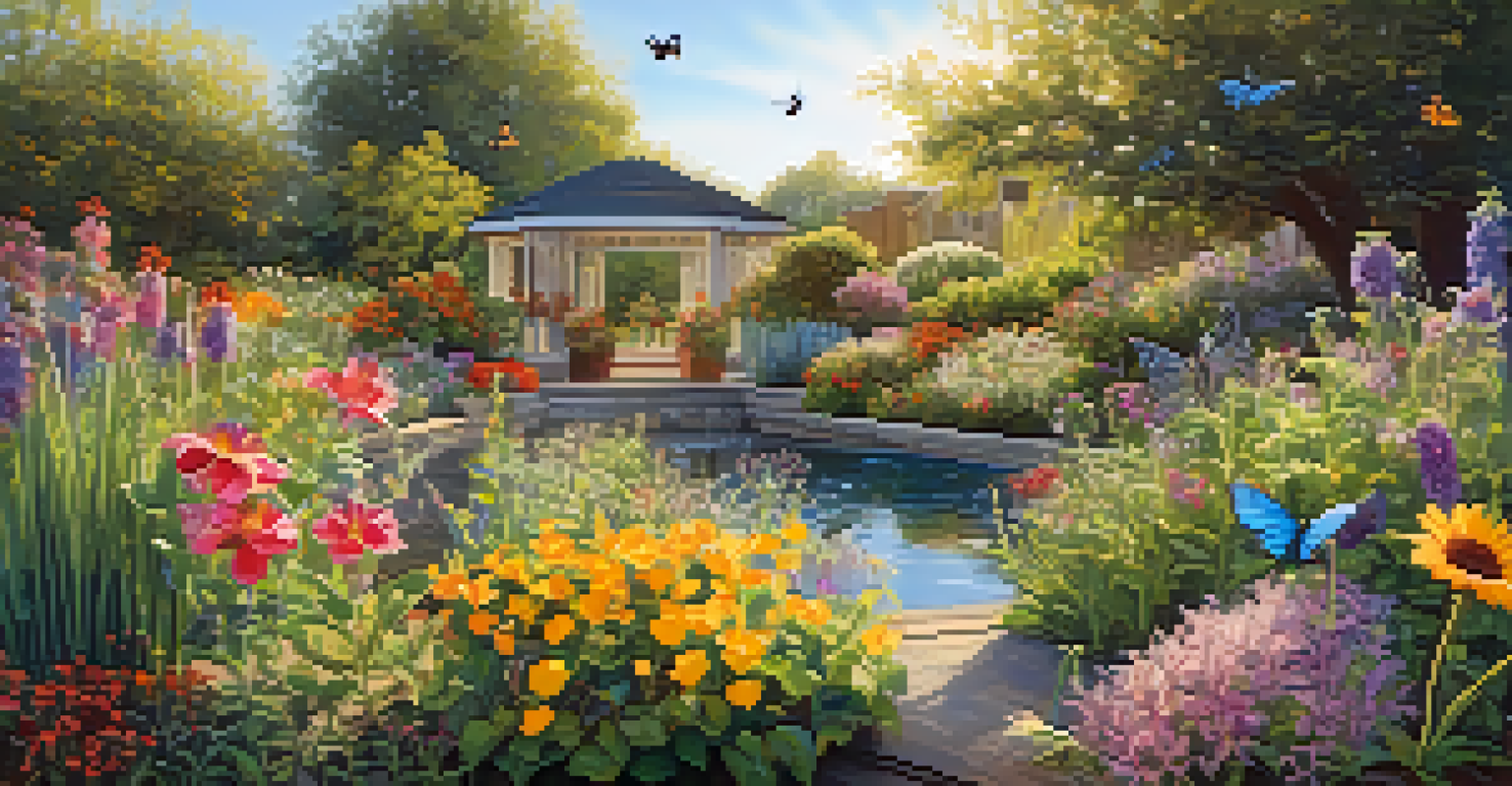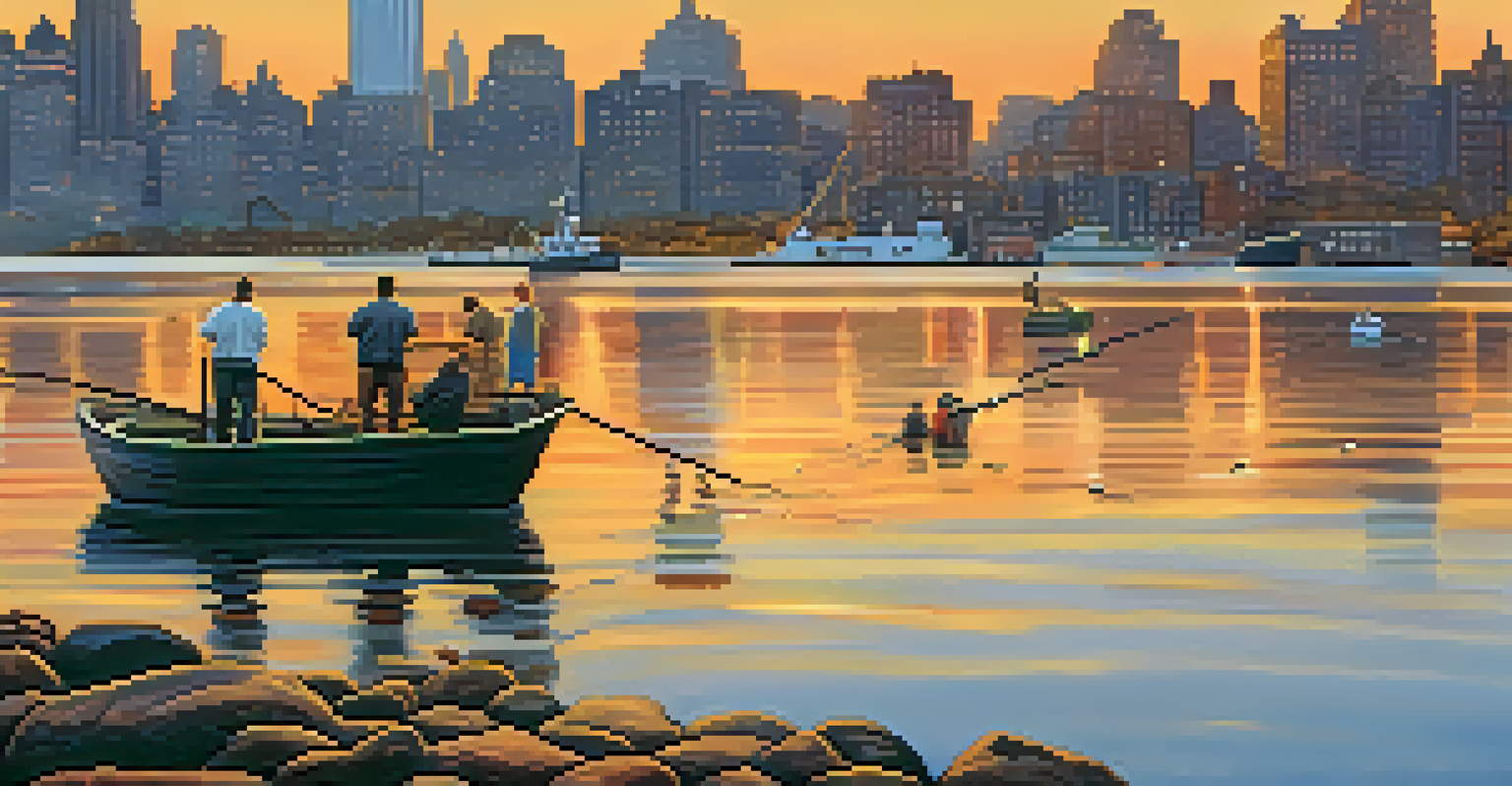Exploring New York City's Urban Wildlife: A Hidden Diversity

Introduction to NYC's Urban Wildlife Scene
New York City, known for its towering skyscrapers and bustling streets, is also home to a surprising variety of wildlife. While many think of urban areas as concrete jungles, NYC boasts parks, rivers, and green spaces that support diverse ecosystems. From the iconic Central Park to the quieter corners of Queens, nature thrives amidst the urban chaos.
In every walk with nature one receives far more than he seeks.
Many residents might be unaware of the wildlife living just outside their windows. Birds, mammals, insects, and even aquatic life have adapted to the city's unique environment, finding ways to coexist with human activities. This rich biodiversity is a testament to nature's resilience and ability to flourish in unexpected places.
In this article, we'll delve into the hidden diversity of urban wildlife in New York City, exploring the animals that call this vibrant metropolis home. By understanding these creatures, we can foster a deeper appreciation for the natural world that exists alongside our urban lifestyle.
Birdwatching in the City: A Feathered Community
One of the most noticeable groups of urban wildlife in NYC is its bird population. Over 300 bird species have been spotted in the city, ranging from the common pigeon to majestic hawks and colorful warblers. Birdwatching has become a popular pastime for many locals, with parks and waterfronts serving as prime spots for enthusiasts to observe these winged residents.

Central Park is often considered a birdwatcher's paradise, especially during migration seasons when various species stop by for a rest. Areas like the Ramble offer not just a serene retreat but also a chance to see rare birds up close. The excitement of spotting a rare bird can feel like a treasure hunt, bringing joy to both seasoned birders and casual observers.
Diverse Wildlife Thrives in NYC
New York City is home to a surprising variety of wildlife, including birds, mammals, and insects that adapt to urban life.
Additionally, NYC has implemented initiatives to create bird-friendly habitats, such as birdhouses and green roofs. These efforts help sustain the city's avian population, making it a more welcoming environment for our feathered friends.
Mammals in the Concrete Jungle
When you think of mammals in NYC, you might picture rats and squirrels, but the city's wildlife extends far beyond these common critters. Coyotes, raccoons, and even the occasional deer can be spotted in various neighborhoods. These mammals have adapted remarkably well to urban life, often finding food and shelter in unexpected places.
Wildlife conservation is not just about saving animals; it’s about saving the world we live in.
For instance, coyotes have been increasingly sighted in areas like Brooklyn and Queens, showcasing their ability to thrive in urban settings. They play a vital role in controlling the population of smaller animals, maintaining a balance in the ecosystem. This adaptability highlights the intricate relationships between wildlife and their environment, even in a bustling city.
Moreover, community awareness about these mammals can lead to coexistence strategies, reducing conflicts between humans and wildlife. Initiatives like wildlife corridors and safe feeding practices can help maintain harmony, allowing both residents and urban mammals to thrive together.
The Underappreciated Insect Life
Insects may be small, but they play a crucial role in New York City's ecosystem. From pollinators like bees and butterflies to vital decomposers like beetles and worms, these tiny creatures contribute significantly to the health of urban gardens and parks. Unfortunately, their importance is often overlooked in favor of more charismatic animals.
Urban gardens and green spaces serve as havens for these insects, providing food and habitats. Community gardens, in particular, have become hotspots for various pollinators, supporting biodiversity. People are slowly beginning to recognize that a healthy insect population is essential for the overall health of the urban ecosystem.
Parks Support Urban Ecosystems
NYC's parks play a crucial role in wildlife conservation, providing essential habitats and fostering community engagement with nature.
By creating insect-friendly environments—like planting native flowers and avoiding pesticides—residents can foster a thriving community of beneficial insects. This not only enhances the beauty of their surroundings but also supports the larger network of wildlife in the city.
Aquatic Life in NYC's Waterways
While many think of urban environments as devoid of aquatic life, NYC's rivers and coastal areas are teeming with diverse species. From the Hudson River to Jamaica Bay, these waters support fish, turtles, and even seals, showcasing a vibrant underwater ecosystem. Fishing and boating enthusiasts can often witness this hidden aquatic world firsthand.
Efforts to clean and restore water quality have led to a resurgence of fish populations in the city’s rivers. Species like striped bass and bluefish are now commonly seen, attracting anglers from around the region. This revival not only benefits local fishermen but also contributes to the overall health of the marine ecosystem.
Moreover, organizations are working to raise awareness about the importance of preserving these waterways. By engaging the community in clean-up initiatives and educational programs, New Yorkers are learning to appreciate and protect the aquatic life that shares their environment.
The Role of Parks in Urban Wildlife Conservation
Parks play a pivotal role in supporting wildlife in New York City, acting as green lungs amidst the urban sprawl. These green spaces provide essential habitats for countless species, making them vital for conservation efforts. Not only do parks offer refuge for wildlife, but they also create opportunities for residents to connect with nature.
Central Park, Prospect Park, and smaller neighborhood parks serve as critical habitats for various species, from birds to mammals. They are meticulously designed to include diverse plant life, which in turn supports a range of animals. This interconnectedness emphasizes the importance of preserving and enhancing these parks for future generations.
Challenges to Urban Wildlife
Urbanization brings challenges like habitat loss and pollution, making it essential to advocate for wildlife-friendly practices.
Community involvement in park maintenance and wildlife monitoring can further enhance these efforts. By participating in volunteer programs and advocating for wildlife-friendly practices, residents can play an active role in ensuring that these parks remain vibrant ecosystems.
Challenges Facing Urban Wildlife in NYC
Despite the thriving wildlife in NYC, urban environments present significant challenges to these animals. Habitat loss, pollution, and climate change are major threats that can disrupt the delicate balance of urban ecosystems. As the city continues to grow, maintaining spaces for wildlife becomes increasingly critical.
For instance, roadways and buildings can create barriers for animals trying to navigate their environment. Many species struggle to find safe corridors to travel between habitats, which can lead to decreased populations. Understanding these challenges is the first step toward developing solutions that support urban wildlife.

Community engagement is essential in addressing these issues. By raising awareness and advocating for wildlife-friendly urban planning, residents can help create a more sustainable environment that allows both people and wildlife to thrive.
Conclusion: Celebrating NYC's Urban Wildlife
New York City's urban wildlife is a remarkable aspect of its identity, showcasing nature's resilience in a bustling metropolis. From the soaring birds in Central Park to the hidden mammals in neighborhoods, these creatures enrich our urban experience and remind us of the beauty surrounding us. Celebrating this diversity can foster a deeper connection between residents and their environment.
By recognizing the importance of urban wildlife, we can take steps to protect and preserve these species. Small actions, such as creating wildlife-friendly spaces and participating in conservation efforts, can make a significant difference. Embracing our role as stewards of the environment is essential for the future of both wildlife and city dwellers.
Diverse Wildlife in Urban NYC
New York City hosts a surprising variety of wildlife, from birds to mammals, that thrive alongside human activity.
As we explore and appreciate the hidden diversity of wildlife in New York City, let’s commit to ensuring these animals have a place in our urban landscape. Together, we can create a harmonious coexistence that benefits both nature and our vibrant city life.